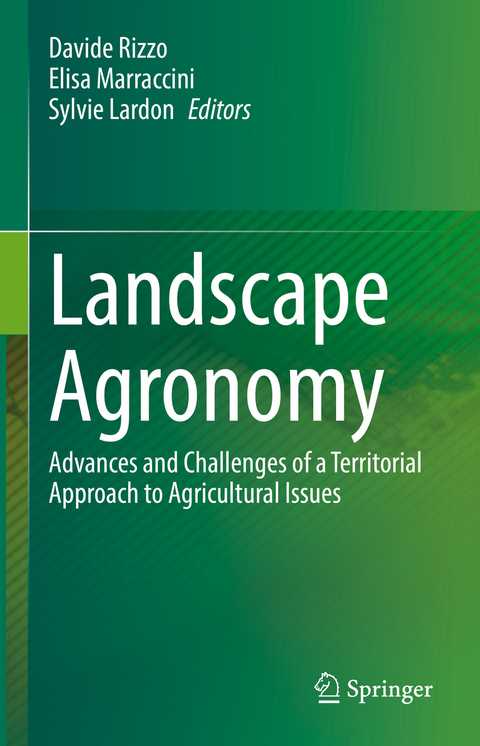
Landscape Agronomy
Springer International Publishing (Verlag)
978-3-031-05261-3 (ISBN)
This book covers the background that improved the transdisciplinary interface of agronomy with spatially-explicit disciplines like landscape ecology and geography both in research and in training programs, in addition to some experiences of participative landscape management. On these bases, the state of art on cutting-edge data availability and methodological issues is used to select and discuss some worldwide case studies.
This selection of research topic examples underpins the concluding discussions about challenges ahead. Researchers as well as policy and decision makers are the main target of this book that seeks to provide a toolbox of concepts, examples and ideas to improve the understanding of agricultural landscapes. Agricultural activities manage the greatest share of land surface on Earth with fast-paced changes compared to any other human land use. With this book we aim at providing a stronger interface between agricultural science and landscape design processes.
Davide Rizzo is an agronomist, characterizing the spatial organization of cropping systems and farming practices at the landscape level to understand the related impact on natural resources. Dr. Rizzo uses different disciplinary approaches ranging from geographical analyses, knowledge capitalization and data-mining of statistical surveys. Elisa Marraccini is an associate professor in Agronomy and Crop Science at the University of Udine, Italy. Her main research interests are the design and assessment of sustainable cropping and farming systems in different contexts and the understanding of the land use trajectories at the farm, landscape and regional levels. Sylvie Lardon is a senior scientist at INRAE and associated professor at AgroParisTech, at Clermont-Ferrand, France. Her research focuses mainly on the development and use of qualitative spatial models to build shared visions and improve actors' participation in territorial projects.
Chapter 1. Agriculture at the Landscape Level: Scientific Background and Literature Overview.- Part 1. Observing.- Chapter 2. Agrometeorological Services for Landscape Agronomy: The Italian Case in the European Context.- Chapter 3. Availability and Integration of Agro-Environmental Data: the French case.- Chapter 4. A Method to Assess the Fragility of a Terraced System as an Example of Landscape Agronomic Analysis.- Part 2. Understanding.- Chapter 5. Exploring Futures in Landscape Agronomy: Methodological Issues and Prospects of Combining Scenarios and Spatially Explicit Models.- Chapter 6. Aligning Governance of Quality with Quality Management Systems in Territory-based Agrifood Chains.- Part 3. Supporting Action.- Chapter 7. Innovation in Education and Training: Insights from New Integrative Approaches.- Chapter 8. Innovative Governance and Participatory Research for Agriculture in Territorial Development Processes. Lessons from a Collaborative Research Program (PSDR).- Chapter 9. Guiding Multifunctional Landscape Changes Through Collaboration - Experiences from a Danish Case Study.- Chapter 10. Landscape Agronomy: Lessons Learned and Challenges Ahead, from a European Perspective.
| Erscheinungsdatum | 11.09.2022 |
|---|---|
| Zusatzinfo | XIX, 294 p. 55 illus., 41 illus. in color. |
| Verlagsort | Cham |
| Sprache | englisch |
| Maße | 155 x 235 mm |
| Gewicht | 630 g |
| Themenwelt | Naturwissenschaften ► Biologie ► Botanik |
| Naturwissenschaften ► Biologie ► Ökologie / Naturschutz | |
| Weitere Fachgebiete ► Land- / Forstwirtschaft / Fischerei | |
| Schlagworte | Agronomy Toolbox for Policy Makers • Landscape Agronomy • landscape ecology • Managing Agricultural Activities • sustainable land use • Territory Agronomy • Understanding of Agricultural Landscapes |
| ISBN-10 | 3-031-05261-7 / 3031052617 |
| ISBN-13 | 978-3-031-05261-3 / 9783031052613 |
| Zustand | Neuware |
| Haben Sie eine Frage zum Produkt? |
aus dem Bereich


